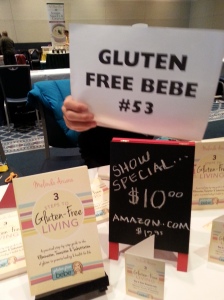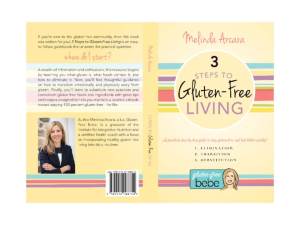
While shopping for dinner, whether it be breakfast or filet mignon, I not only buy food to feed my family, but also to buy local in order to support the community.
Large corporations have fooled us into believing that growing and producing food is an inconvenience that we should not be bothered with. We have been brainwashed into believing that corporate farms are better equipped to “produce” food as a commodity that is bought and sold to retail food corporations (Kraft, Nabisco, Quaker, etc.) for food production.
Corn, wheat and other grains are grown on farms that contain thousands of acres of land and require high amounts of chemicals (pesticides) to produce high amounts food. Growing food is big business, called Agrobusiness, and large corporate farms own ships, shipyards and trucking companies worldwide to prevent anything (weather, growing conditions, etc.) from not fulfilling food contracts with retailers. 1
Agrobusiness is about growing for shareholders profit and quality is not the highest priority. Large corporately owned farms (Tyson, ConAgra, Cargill, etc.) produce high yields of outputs based on negotiated contracts with retailers (Wal-Mart, Costco, Kroger, etc.). 1 What we eat for dinner is controlled through contracts made from commodity and supply chain availability.
The next time you are putting your grocery list together, remember that YOU can control what is for dinner by purchasing locally sourced foods and it also helps the earth, your community and your health.
Here are three great reasons to support local and sustainable food sourcing.
Reason #1
Locally sourced foods are better for the ENVIRONMENT
To make a profit, corporately owned farms track two things, keeping inputs (pesticides, fertilizer, seeds, farm equipment, etc.) low and outputs (wheat, barley, rye, corn, eggs, meat, etc.) high. Large farms require large amounts of inputs to make large amounts of outputs, which can be detrimental to the environment. For example, feed lots with thousands of cattle produce high amounts of CO2 (greenhouse gases) from excess manure and overused farm fields create soil imbalances that require chemicals to rebalance. 2 Pesticide runoff causes cancer, reproductive, immune and neurological diseases and nonproblematic insects and animals are impacted by small amounts of pesticides on farms as well. 3

Feed Lot Cattle 
Local Sustainable Cattle
Sustainable local farms can reduce or remove the need for chemicals like pesticides, fungicides and fertilizers, which can harm pollinating insects, birds, fish and wildlife. 4 The use of sustainable farming practices (crop rotations, crop covering, soil management and seed diversity) disrupt the life cycles of unwanted pests naturally and keep soil nutrients in balance, reducing the need for chemicals. 3
Local animal agriculture farming is better for the environment as well. Farms with fewer animals can manage manure more easily than large farms. This reduces the amount of CO2 (greenhouse gases) and allows animals to graze in larger areas, which is more humane. 2
Reason #2
Locally sourced foods are better for the ECONOMY
Agribusiness has purchasing power. The business of buying up small farms (and farmland) not only to increase their growing acreage, but to encourage retail growth. Strip malls with Costco, Target and Wal-Mart make consumers reliant on corporations for their food and perpetuate a buying cycle that only benefits big business. 5
Local farms play a big role in the local community’s economy through the “multiplier effect”. This concept means money spent on local food products, is more likely to be re-spent within the local community. For example, local farmers purchase seeds, fertilizer and equipment from local businesses who employ local people to continue the local buying process. The “multiplier effect” from those sales have a ripple effect within the community. 6

Another economic benefit is through farm markets, farm stands and community support agriculture (CSA) programs. CSA’s build relationships between farmers and consumers by allowing members to purchase “shares” of a farms bounty before the season begins. CSA memberships help to reduce farmers financial risks from weather, poor growing conditions, natural disasters and fluctuating input costs and provide them working capital to plan a successful growing season. 7 CSA farms connect consumers to plant growing cycles and teaches them how and where food comes through educational seminars, programs and direct marketing. This knowledge helps expand local business and funnels money through communities in a circle of positive impact. 7 The community pride from local food sourcing encourages people to work, eat and support local business and helps the community flourish.
Reason #3
Locally sourced foods are more NUTRITIOUS
If “we are what we eat”, then choose to be something grown from the earth, sun and soil in your local community. Knowing where your food comes from positively fuels the body versus food manufactured in a factory made from corporately contracted commodities. 8
Local farming produces seasonal foods that are grown and picked at the peak of nutrition and travel shorter distances (food miles) to get from field to table. 9 Allowing foods to stay on the vine longer has been shown to increase their nutrient content, quality and taste which encourages people to eat more nutrient dense (seasonal) locally grown foods. 10 11 12
Animals raised on large farms are sometimes forced into confined, crowded environments and have been shown to have more stress hormones (adrenaline) which can affect the quality of their outputs and meat. Overcrowding of animals may also require them to be treated with antibiotics to prevent the spread of diseases or given hormones to increase their growth rates. Small farms, with fewer pasture raised animals, have less stress, require less antibiotics (and hormones) and produce better tasting biproducts. 13

Local and sustainable farm sourcing is gaining popularity thanks to social media, direct marketing and increased involvement in localism (eating within 50 miles of home). Small farms use less pesticides, produce smaller amounts of greenhouse gases and are more conscious of soil quality than industrialized farms. 9 Consumers are building an understanding that quality of food matters and sourcing local ingredients keeps the circle of income within their communities. And food grown in season and allowed to fully vine ripen is more nutritious and better tasting than food picked too early and shipped long distances. The more you get involved in your food through CSA memberships, farm markets and farm stands, the more towns can prosper and grow from within, breaking the reliance on large corporations.
So remember that local sustainable food sourcing is better for the environment, the local economy and your nutrition. Don’t forget to connect with and support your local farmers through CSA’s, Farm Markets and Farm stands
Citations:
1. McKenzie S. A brief history of agriculture and food production:
The rise of “Industrial agriculture”. The Johns Hopkins University. 2007.
2. Amarakoon ID, Zvomuya F, Cessna AJ, Degenhardt D, Larney FJ, McAllister TA. Runoff losses of excreted chlortetracycline, sulfamethazine, and tylosin from Surface‐Applied and Soil‐Incorporated beef cattle feedlot manure. Journal of environmental quality. 2014;43(2):549-557. https://onlinelibrary.wiley.com/doi/abs/10.2134/jeq2013.02.0039. doi: 10.2134/jeq2013.02.0039.
3. Leo Horrigan, Robert S. Lawrence, Walker P. How sustainable agriculture can address the environmental and human health harms of industrial agriculture. Environmental health perspectives. 2002;110(5):445-456.
4. Lichtenbert E. Diminishing returns: Salmon decline and pesticides . . 2001.
5. Mills E, Wilkinson J, Then C, et al. Agrifood atlas. . 2017. https://search.datacite.org/works/10.13140/rg.2.2.32895.51364. doi: 10.13140/rg.2.2.32895.51364.
6. Bloom D, Lelekacs J, Dunning R. Local food systems: Clarifying current research. NC State Extension Publications Web site. https://content.ces.ncsu.edu/local-food-systems-clarifying-current-research. Updated 2018.
7. Paracha Z, Dang A, Fagan JM. The benefits of community supported agriculture. . 2011. doi: https://doi.org/doi:10.7282/T3Q81BTN.
8. Rosenthal J. Integrative nutrition. New York: Integrative Nutrition Inc; 2017. https://ebookcentral.proquest.com/lib/[SITE_ID]/detail.action?docID=4941557.
9. Pirog RS, Van Pelt T, Enshayan K, Cook E. Food, fuel, and freeways: An iowa perspective on how far food travels, fuel usage, and greenhouse gas emissions. https://lib.dr.iastate.edu/leopold_pubspapers/3. Updated 2001.
10. Sargent S. Ripening tomatoes with ethylene. University of Florida Extension, Institute of Food and Agricultural Sciences. 2000.
11. Bo Zhang, Denise M. Tieman, Chen Jiao, et al. Chilling-induced tomato flavor loss is associated with altered volatile synthesis and transient changes in DNA methylation. Proceedings of the National Academy of Sciences – PNAS. 2016;113(44):12580-12585. https://www.jstor.org/stable/26472320. doi: 10.1073/pnas.1613910113.
12. Khoo HE, Azlan A, Tang ST, Lim SM. Anthocyanidins and anthocyanins: Colored pigments as food, pharmaceutical ingredients, and the potential health benefits. Food & nutrition research. 2017;61(1):1361779-21. http://www.tandfonline.com/doi/abs/10.1080/16546628.2017.1361779. doi: 10.1080/16546628.2017.1361779.
13. Bozzo G, Barrasso R, Marchetti P, et al. Analysis of stress indicators for evaluation of animal welfare and meat quality in traditional and jewish slaughtering. Animals (Basel). 2018;8(4):43. https://www.ncbi.nlm.nih.gov/pubmed/29561752. doi: 10.3390/ani8040043.





 I’m sure you’ve heard the term “fashionista” as an endearing term for anyone that frequently buys clothing from
I’m sure you’ve heard the term “fashionista” as an endearing term for anyone that frequently buys clothing from 






































 This morning I looked at myself in the mirror and although my eyes were still swollen, the scale was 2 pounds lighter from the previous days inflammation decreasing. Sadly, I was still anxious trying to figure out if another day of pain was ahead of me. Thankfully, as the day went on and there was no sign of pain, like a butterfly emerging from a cocoon, I ventured outside into the sunshine to enjoy the day. I sat down to write this post and found an article from Dr. Mark Hyman titled
This morning I looked at myself in the mirror and although my eyes were still swollen, the scale was 2 pounds lighter from the previous days inflammation decreasing. Sadly, I was still anxious trying to figure out if another day of pain was ahead of me. Thankfully, as the day went on and there was no sign of pain, like a butterfly emerging from a cocoon, I ventured outside into the sunshine to enjoy the day. I sat down to write this post and found an article from Dr. Mark Hyman titled 







